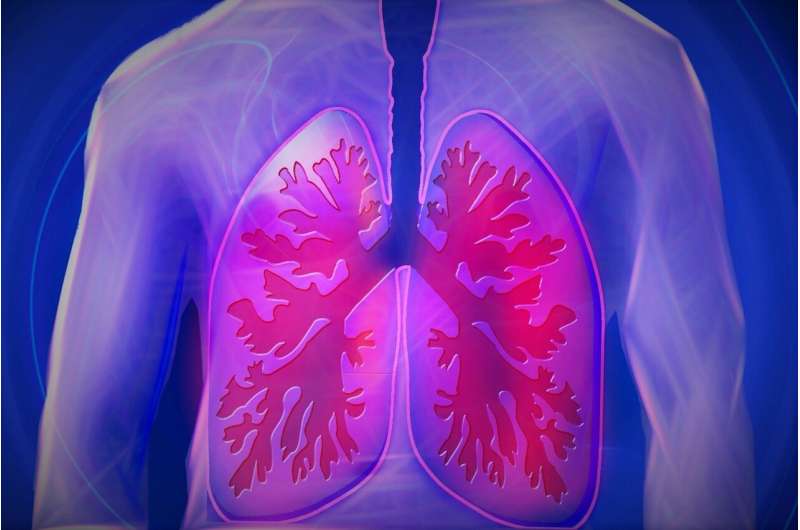This article has been reviewed according to Science X's editorial process and policies. Editors have highlighted the following attributes while ensuring the content's credibility:
fact-checked
peer-reviewed publication
trusted source
proofread
Researchers develop new model for prioritizing lung transplant candidates

A team from Cleveland Clinic has developed a new model for prioritizing patients waiting for a lung transplant, aimed at improving outcomes and reducing deaths among those in need of donor lungs. The new method offers an improved strategy for organ allocation by taking into account how the time a patient has spent on the waiting list could impact the severity of their disease and the urgency of their need for a transplant.
The results of a study looking at this new method were published in The American Journal of Respiratory and Critical Care Medicine.
Currently, lung transplant candidates are ranked by a scoring equation called the Composite Allocation Score (CAS). Candidates are assigned a number based on factors including how stable they are while waiting, chances of survival after receiving a new organ, and how easily they can be matched for available organs.
Those with the highest scores are given priority and offered donor lungs first. However, the scores are based on tests given twice a year at transplant centers. That means that unless a patient's health suddenly and drastically changes, their score will remain the same for at least six months.
"The problem with this method is that the scoring equations fail to consider how a patient's health status changes as they spend more time on the list," said Maryam Valapour, M.D., M.P.P., director of Lung Transplant Outcomes at Cleveland Clinic.
"The longer a patient lives with a severe lung disease, the more their risk of developing severe complications increases. This is something clinicians observe every day—that our patients' risk of developing complications changes over time. Therefore, some patients' scores may not reflect how urgently they need a transplant."
To determine how the amount of time on the waitlist affects clinical outcomes, the team of researchers analyzed data from 12,000 American adults listed for lung transplant between 2015 to 2020. The study showed that for many patients, their risk of death prior to transplant increased as they spent longer times waiting for donor lungs.
When the team looked at patients who died on the waiting list, they found that many had not been given enough priority in the CAS. To more accurately score the candidates, the team developed a more dynamic method called the multistate composite model that accounted for the type of lung disease and time on the waiting list.
When they recalculated the original scores with their new equation, it consistently marked those patients as high priority. However, for patients who originally received low-priority scores and remained stable over time, using the new method did not change their scores.
"The approaches we present in our paper are capable of identifying whose trajectory is more stable on the waiting list versus those whose trajectory is worsening between six-month clinical updates. The estimates in our model more closely align with observed trends in individual U.S. lung transplant patients," says Jarrod Dalton, Ph.D., director of Lerner Research Institute's Center for Populations and Health Research, who is first author of the paper.
"This approach may allow us to more accurately prioritize time-sensitive lung transplant candidates and decrease waitlist mortality for patients with end-stage lung disease."
"This research advances us towards development of a more comprehensive prediction model for risk of mortality among lung transplant candidates that could help guide decisions about patients who are in greater need for lung transplant and increase their odds for survival," said James P. Kiley, Ph.D., director of the Division of Lung Diseases at the National Heart, Lung, and Blood Institute (NHLBI).
In 2022, there were over 3,000 candidates added to the lung transplant waitlist with over 2,600 lung transplants performed, according to UNOS. While the numbers of donors and transplants are improving, there is still a shortage of available organs in the United States.
More information: Incorporating Effects of Time Accrued on the Waiting List into Lung Transplantation Survival Models, American Journal of Respiratory and Critical Care Medicine (2023).





















